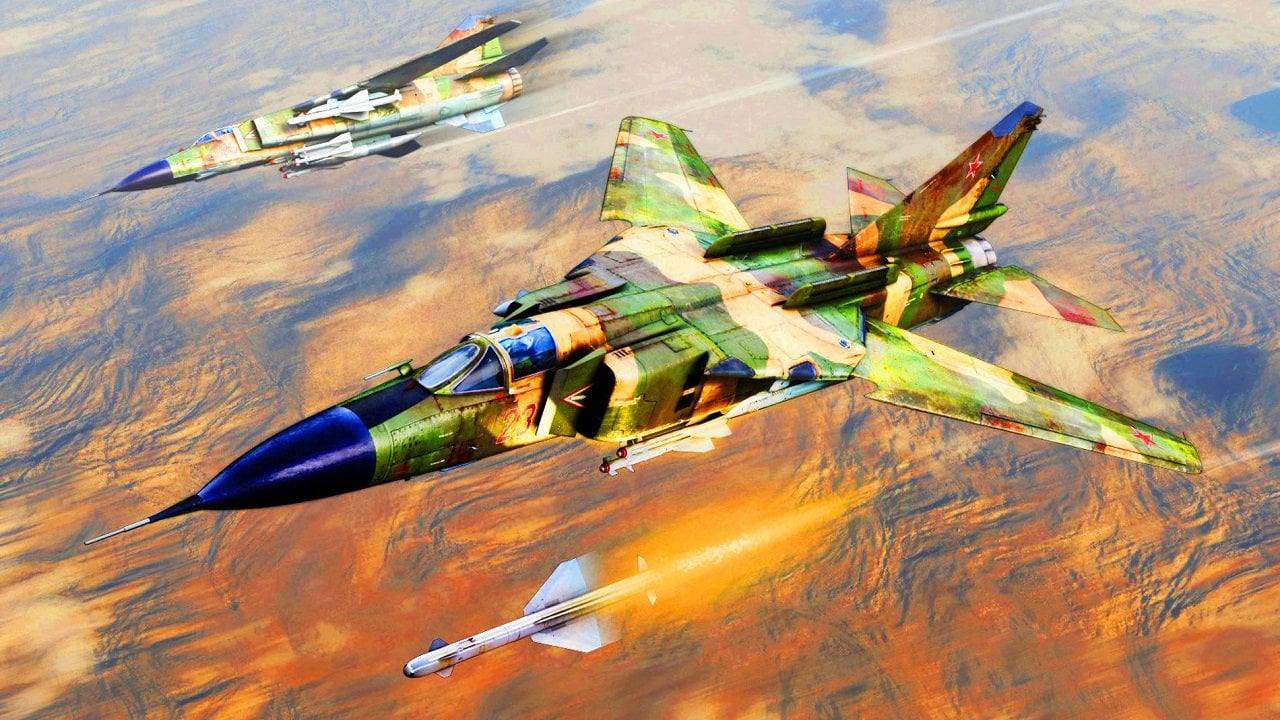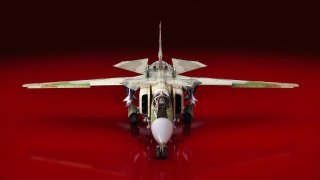Russia's MiG-23 Flogger Fighter Nightmare Was a Historic Mess
The Mikoyan-Gurevich MiG-23 "Flogger" stands out as a notable misstep in an otherwise prestigious line of aircraft produced by the Soviet/Russian manufacturer. Designed to improve upon the limitations of the MiG-21, such as its limited range, poor radar, and small weapon loads, the MiG-23 was developed with ambitious goals during the 1960s.
Summary: The Mikoyan-Gurevich MiG-23 "Flogger" stands out as a notable misstep in an otherwise prestigious line of aircraft produced by the Soviet/Russian manufacturer. Designed to improve upon the limitations of the MiG-21, such as its limited range, poor radar, and small weapon loads, the MiG-23 was developed with ambitious goals during the 1960s. It featured variable-geometry wings, a design influenced by Western aircraft like the F-111 and F-4 Phantom.
-Despite these innovations, the MiG-23 was plagued by serious operational shortcomings, including poor handling, stability issues, and an unreliable engine. Its combat performance was lackluster, notably underperforming in engagements against older MiG-21s and contemporary U.S. fighters such as the F-4, F-14, and F-15.
-Ultimately, the MiG-23 was phased out by the Soviets in favor of the MiG-27, leaving only Syria and North Korea as current operators of this model, both of which are not highly regarded in the aerospace community.
Why Russia's MiG-23 Flogger Fighter Failed
I wrote recently about the “five worst fighter jets of all time.” The list was arbitrary, sure, but included five aircraft that are commonly regarded as atrocious.
Let’s take a closer look at one of the aircraft that made the list, the Mikoyan-Gurevich MiG-23.
Designing a dud
Soviet/Russian aerospace builder Mikoyan-Gurevich has earned industry credibility through a long list of design accomplishments. The company’s abbreviation, “MiG” has become synonymous throughout the West with “enemy aircraft.” In Top Gun, the unnamed protagonists flew fictional MiG-28s (which were really just repainted Northrop F-5s). But along with quality aircraft, like the MiG-15 and MiG-29, MiG has also had some flops. Most notably, the MiG-23 “Flogger.”
The MiG-23 was developed to address shortcomings in the MiG-21 platform. The MiG-21, while fast and agile, suffered from limited range, bad radar, and small weapon loads. The Soviets began work on a replacement in the 1960s; the replacement was expected to have better performance and better range than the MiG-21 while featuring improved avionics and beyond-visual-range (BVR) weapons. The Soviets also demanded that the new aircraft have a much shorter take-off distance and improved low-level speed and handling relative to the MiG-21.
The requirements forced MiG to consider two different options. First, a lift jet, like the AV-8B Harrier. Second, a jet with variable-geometry wings, like the F-14 Tomcat. MiG pursued the first option, building a prototype. However, the prototype proved unsatisfactory and work on the lift jet option was abandoned. MiG then pursued the second option, crafting a prototype that could set its wings at angles of 16, 45, and 72 degrees. The variable-geometry winged MiG proved more promising. In 1969, the first production MiG-23 made its debut flight.
The primary Western influences for the MiG-23 were the General Dynamics F-111 and the McDonnell Douglas F-4 Phantom. But whereas the F-111 was too heavy and stable to serve as a fighter (and instead served as a long-range interdictor), the MiG-23 was kept light and agile enough to dogfight.
The MiG-23 Fighter: Falling short
Despite the lofty goals of the MiG-23’s designers, the new jet proved to be a debacle. Pilots soon found that the MiG-23 handled terribly, suffered from poor stability, and had an engine prone to overheating and untimely failing. Soviet maintainers found that the MiG-23 cost significantly more than expected to keep airworthy.
Most concerning, the MiG-23’s combat record was embarrassing. Deployed in Syria and Iraq, the MiG-23 struggled in encounters against F-4s, F-14s, and F-15s. Most embarrassing of all, the MiG-23 even lost in aerial combat to the MiG-21, the very aircraft that the MiG-23 was built to replace.
Part of the MiG-23’s problem in combat was poor visibility. Straight-on visibility was adequate, but the KM-1 ejection seat obstructed the pilot’s visibility to the rear of the aircraft. To compensate, the MiG-23 was outfitted with a periscope in the canopy, which allowed the pilot to see behind the aircraft, albeit within a very limited range of view.

The Soviets retired their MiG-23s without ceremony, in favor of the MiG-27. Only two air forces still operate the MiG-23 today: Syria and North Korea, neither of which earns much respect in the aerospace community.
About the Author: Harrison Kass
Harrison Kass is a defense and national security writer with over 1,000 total pieces on issues involving global affairs. An attorney, pilot, guitarist, and minor pro hockey player, Harrison joined the US Air Force as a Pilot Trainee but was medically discharged. Harrison holds a BA from Lake Forest College, a JD from the University of Oregon, and an MA from New York University. Harrison listens to Dokken.
All images are from Shutterstock.


